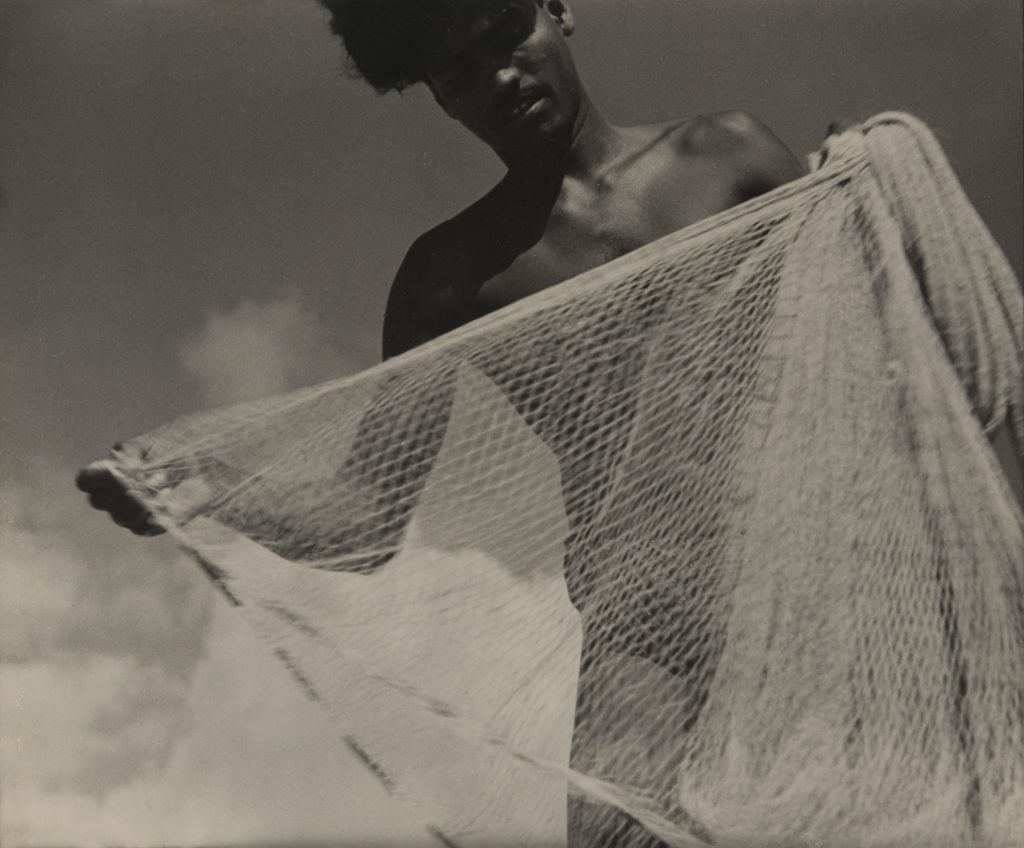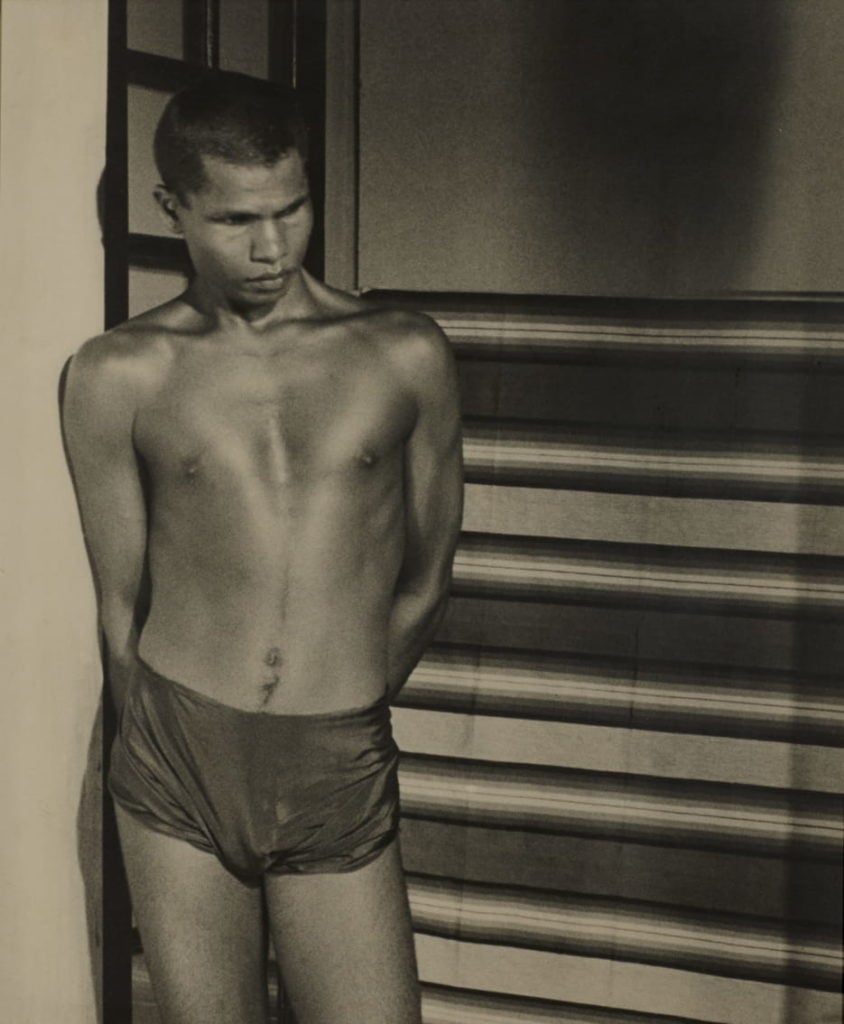Art World
Watch Loewe’s Jonathan Anderson Discuss the ‘Grandeur and Beauty’ of Lionel Wendt’s Photography
Wendt captured the inherent beauty and dignity of Sri Lankan men. Now, the photographer's work is making its way back into the public eye.
Wendt captured the inherent beauty and dignity of Sri Lankan men. Now, the photographer's work is making its way back into the public eye.
Artnet News

Photographer Lionel Wendt (1900–1944) may not be a household name, but his striking photographs are garnering new attention. The artist captured the men of Ceylon, the former British colony now known as Sri Lanka, in almost shocking intimacy. Wendt’s images were a testament to his ardent belief in photography as an art form. Now, the Sri Lankan artist’s arresting work will go on view in the Miami Design District, at Loewe, the Spanish fashion label.
“You could see it bordering on documentary photography,” said Loewe creative director Jonathan Anderson of Wendt’s work, speaking to Shanay Jhaveri, assistant curator of South Asian Art at the Metropolitan Museum of Art in New York. “But there is something to do with the lighting, the way in which the scale matches the subject. For me, it’s very new.”
In his images, Wendt captured the inherent beauty and dignity of his subjects, often with unabashed homoeroticism—many of his works are nudes or feature the traditional Ceylonese loincloth.
“He bestows a kind of grandeur and beauty on these laboring bodies, which at that point had never been photographed or considered in that way,” said Jhaveri, who also praised the range of Wendt’s work. “There’s the documentary material, then you have the more staged photos where he puts the body alongside a classical statue… and then his own experimental manipulated images of the male body.”

Lionel Wendt’s Young Man With Fishing Net (1935). Photo courtesy of Loewe.
Born in Colombo, Ceylon, Wendt studied law and music in the UK, becoming a concert pianist. When he returned to his native land, he co-founded the Photographic Society of Ceylon in 1934 and began the Associated Newspapers of Ceylon’s photo studio, Chitrafoto. He started out with a Rolleiflex camera, before transitioning to a Leica. After about 1933, the artist began printing his own images in his darkroom.
Wendt’s avant-garde photographs were the subject of a show at London’s Camera Club in 1938, and in Colombo two years later. Wendt also founded the ’43 Group, which became a major force in post-independence Ceylon Modern art. After his death, Wendt’s negatives were destroyed, and his work fell into obscurity for decades. Now, however, his work is making its way back in the public eye.

Lionel Wendt’s Untitled (1935). Photo courtesy of Loewe.
At the Loewe exhibition, titled “Chance Encounters III,” Wendt’s photos will be paired with sculpture by Richard Smith and ceramics commissioned from Sara Flynn. It’s been a big year for the late photographer, who was part of documenta 14 in Athens and received his very first museum solo show, at the Huis Marseille Museum for Photography in Amsterdam, which closed in September.
It seems unlikely that Wendt would have been surprised by the art world’s renewed interest in his work. “He really believes photography to be an art form,” said Jhaveri of the late photographer. “That’s what makes him so remarkable.”
“Chance Encounters III” runs December 5–February 4 at Loewe, Miami Design District, 110 NE 39th Street, Suite #102.